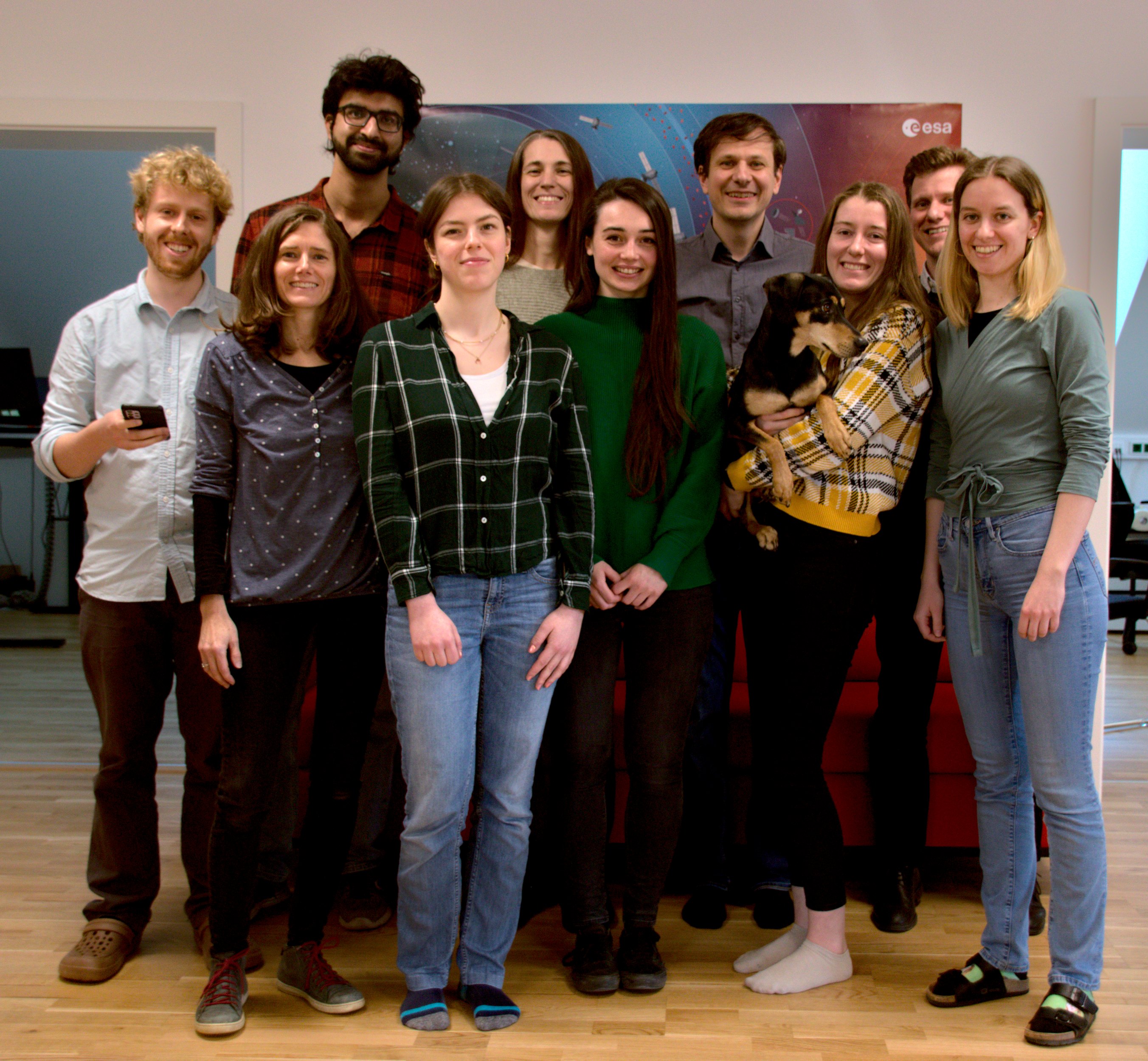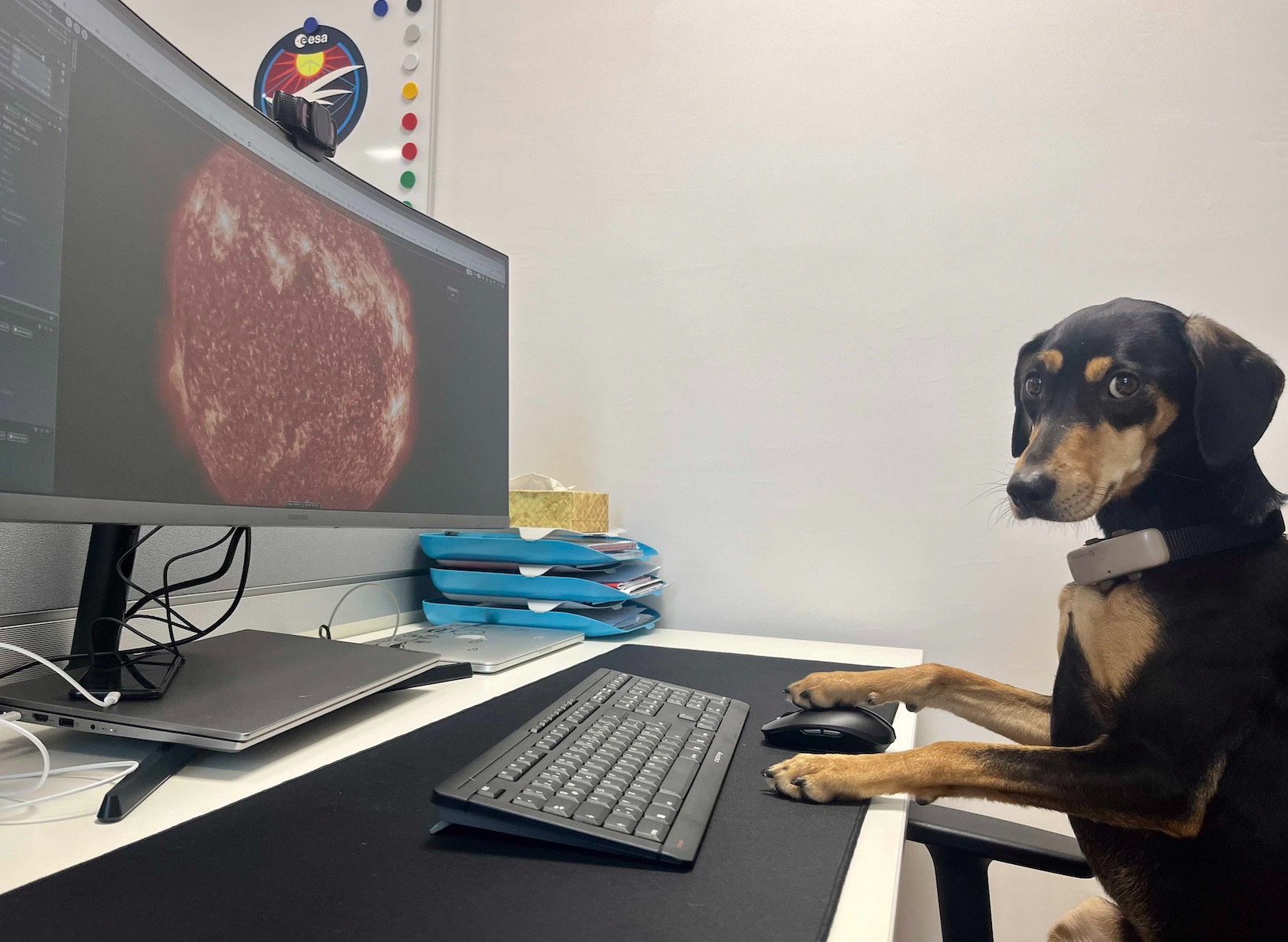
Dr. Christian Möstl
Christian Möstl is the head of the Austrian Space Weather Office, established in 2022 at the Geosphere Austria. He is an expert in studying the global interplanetary structure and evolution of solar coronal mass ejections, with data provided by multi-spacecraft imaging and in situ observations from missions such as SDO, SOHO, STEREO, Wind, ACE, Venus Express, MESSENGER, MAVEN, Parker Solar Probe, Solar Orbiter and BepiColombo. Further, he works with his team on the application of basic research results on large-scale solar wind structures to real-time solar wind forecasting, one of the major challenges in the fields of heliophysics and space weather. In particular, the application of data from mission concepts that provide information on the southward Bz magnetic fields closer to the Sun than measured at the L1 point, so called sub-L1 spacecraft or far upstream monitors, are of his central research interest. He is managing the most comprehensive living catalog for interplanetary coronal mass ejections (HELIO4CAST ICMECAT), and played a large part in developing the field of interpreting and modeling heliospheric imager observations, provided by STEREO, Solar Orbiter, Parker Solar Probe, PUNCH and in the future by Vigil. He is the recipient of an Marie S. Curie international fellowship in 2012, the EGU Arne Richter Award in 2016, and an ERC Consolidator Grant in 2022.
Email CV and Publications (PDF) Bluesky Scholar ORCID NASA/ADS GitHub figshare YouTube
Dr. Tanja Amerstorfer
Dr. Tanja Amerstorfer is the deputy head of the Austrian Space Weather Office. She has longtime experience in modeling the evolution of coronal mass ejections and predicting their arrival at Earth, other planets and various satellites in the inner solar system. Her special focus lies on working with data from the heliospheric imagers from the Solar TErestrial RElations Observatory, which serve as prototypes for the ESA Vigil mission, to be launched by the end of the 2020s. She is PI of two stand-alone projects funded by the Austrian Science fund – one is completed and one started in March 2023. Her recent interests are the improvement of real-time predictions of Earth-directed solar storms with the support of machine learning and computer vision tools, and the development and deployment of the solar wind forecast pipelines at the Austrian Space Weather Office.
Email CV (PDF) GitHub Scholar ResearchGate LinkedIn ORCID NASA/ADS
Dr. Rachel L. Bailey
Dr. Bailey has been working at the Austrian Conrad Observatory since 2012. Her research focus is on the development of geomagnetically induced currents (GICs) in the Austrian power grid during geomagnetic storms, a topic she has been working on together with the power grid operators since 2014. This has included developing a model of GICs in Austria, published on GitHub as GEOMAGICA, testing that model vs. measurements, and also investigating the long data set of GIC measurements (6+ years) in Austria. Over the years, she has been involved in the development of the software running at the observatory, Geomagpy. She also has experience using various machine learning methods, including LSTMs and Gradient Boosting Regressors, and likes to tinker with the models for different forms of space weather forecasting, some of which can be found in the Helio4Cast solar wind forecast.
Email GitHub Scholar ORCID
Dr. Ute V. Amerstorfer
Dr. Ute Amerstorfer is a research scientist at the Austrian Space Weather Office. Her expertise ranges from theoretical space plasma physics, MHD and Monte-Carlo simulations, and atmospheric evolution of planets to the interplanetary evolution of coronal mass ejections. Her recent interests focus on the prediction of the magnetic field of coronal mass ejections and on the application of machine learning methods in heliophysics. Additionally, she has held lectures in the master’s and PhD programmes at the Institute of Physics of the University of Graz and has been supervising several bachelor’s and master’s students.
Email GitHub LinkedIn ORCID
Dr. Emma E. Davies
Dr. Emma Davies joined the Austrian Space Weather Office as a postdoctoral researcher in March 2023. Her primary research focusses on the evolution of interplanetary coronal mass ejections (ICMEs), including their global magnetic structure, and the associated space weather effects at Earth. She is focusing on the radial ICME evolution and multispacecraft model validation, to better understand the applicability of upstream monitors for improved space weather forecasting. Emma completed her PhD at Imperial College London in 2021, where she used multi-spacecraft observations from both dedicated solar wind and planetary mission spacecraft such as Solar Orbiter, Bepi Colombo, MESSENGER, Venus Express, ACE, Wind, STEREO, and Juno, to identify ICMEs in-situ and investigate their properties across a wide range of heliocentric distances. More recently, during her time at the University of New Hampshire, she investigated the impact of ICMEs on the galactic cosmic ray (GCR) background, developing expertise in both direct and indirect methods for studying the evolution of ICMEs.
Email LinkedIn ResearchGate Bluesky Scholar ORCID
Dr. Justin Le Louëdec
Dr. Justin Le Louëdec joined the Austrian Space Weather Office as a postdoctoral researcher in June 2023. His research is currently focused on enhancing satellite imaging data, real-time CME detection and tracking using machine learning and computer vision. Prior to this, he obtained his PhD in 3D vision and machine learning for plant phenotyping at the Lincoln Centre for Autonomous Systems (LCAS), University of Lincoln, UK.
Email personal website GitHub LinkedIn Scholar Bluesky ORCID
Dr. Satabdwa Majumdar
Dr. Satabdwa Majumdar joined the Austrian Space Weather Office in December 2023 as a postdoctoral researcher. His primary research interests are Coronal Mass Ejections (CMEs), source regions of CMEs, the solar wind, and space weather. During his PhD at the Indian Institute of Astrophysics (IIA) in Bangalore, he worked on various multi-payload, multi-wavelength data from STEREO, SOHO, SDO, PROBA-2, MLSO, RSTN, E-CALLISTO to probe the early 3D kinematics of CMEs in the inner corona (< 3 Rsun) and how it gets coupled with the kinematics in the heliosphere. His works besides demonstrating for the first time the possibility of 3 vantage point stereoscopy in white light images in the inner corona, also provided many new insights on the 3D evolution of CMEs. Recently, during his stay at the Aryabhatta Research Institute of Observational Sciences (ARIES), he was closely involved in the recently established Aditya-L1 Support Cell (AL1SC), where he created a CME source region catalogue and carried out science studies on CMEs that would act as inputs to the scientific planning of the recently launched Aditya-L1 by the Indian Space Research Organisation (ISRO).
Email GitHub LinkedIn Scholar Bluesky ORCID
Hannah T. Rüdisser, MSc
Hannah joined the Austrian Space Weather Office in Fall 2022 after graduating from her masters degree in theoretical and computational physics. During her masters thesis she worked on machine learning methods for the automatic detection of interplanetary coronal mass ejections (ICMEs). During her PhD, she is now extending her expertise with hyper-fast modeling of solar coronal mass ejections with 3DCORE, and combining this approach with automatic ICME detection. She is the developer of the ARCANE software suite.
Email CV (PDF) personal homepage GitHub LinkedIn Scholar Bluesky ORCID
Maike Bauer, MSc
Maike Bauer joined the Austrian Space Weather Office in September 2022. She is currently working on her PhD and is mainly focused on using multi-spacecraft imaging data from STEREO or Solar Orbiter, as well as applying machine learning techniques to automatically detect CMEs to improve their forecasts. Maike received her MSc in Physics from the University of Graz in 2021. Her previous research work was done under the supervision of Dr. Tanja Amerstorfer and focused on assessing the performance of real-time heliospheric imager data for the prediction of CMEs.
Email ORCID LinkedIn GitHub ResearchGate
Eva Weiler, MSc
Eva Weiler joined the Austrian Space Weather Office in May 2023. She completed her master's degree in Astronomy at the University of Vienna in 2021. For her master’s thesis she constructed a machine learning model that predicts fundamental parameters of evolved solar-like oscillators without requiring measurements of the large frequency separation, hence providing an alternative method for inferring masses and radii of these stars besides seismic scaling relations. Throughout her studies she also observed known exoplanets, getting well acquainted with observing strategies as well as photometric analysis techniques. During her PhD at the Austrian Space Weather Office, she is developing methods to strongly increase the forecast accuracy and lead time for geomagnetic storm magnitudes using upstream monitors such as STEREO-A and Solar Orbiter, with a focus on the STEREO-A Sun-Earth line crossing during 2023-2024. She is also managing our multi-spacecraft CME lineup catalog.
Email ORCID LinkedIn GitHub figshare
Guest scientists
Dr. Martin A. Reiss
Dr. Martin Reiss is a scientist at NASA’s Community Coordinated Modeling Center and a guest scientist at the Austrian Space Weather Office. His research interests are in solar and heliospheric physics, specifically the Sun’s global coronal magnetic fields, the solar origins of the ambient solar wind flow, and the large-scale modeling of the solar wind and interplanetary coronal mass ejections in our solar system. His expertise includes the comparison and optimization of solar wind model solutions with observations from space missions such as the Solar Dynamics Observatory and Parker Solar Probe. Dr. Reiss is particularly passionate about the application of data science methods such as machine learning for the benefit of space weather research.
Email web Bitbucket Scholar ORCID
Lilla, PostDOG

Works on data returned by the Barker Solar Probe.
Proudly handles office security single-pawedly.
Voted Employee of the Month every month.
Very good girl.
Former Members
Dr. Andreas J. Weiss
Andreas Weiss joined our research group in March 2019, and finished his PhD in October 2022. He is an expert in the analytical modeling of interplanetary flux ropes and the application of sequential Monte-Carlo algorithms for fitting mathematical models to spacecraft data. Since November 2022 he is a PostDoc at the NASA Goddard Space Flight Center in the group of Dr. Teresa Nieves-Chinchilla, and works on deformable flux rope models and their hyper-fast computational implementation.
Email NASA web GitHub Scholar ORCID
Jürgen Hinterreiter
GitHub ORCID
Austrian Space Weather Office
GeoSphere Austria
Reininghausstrasse 3, 2nd floor
8020 Graz
Austria
Train / Public transport
Go to Graz main train station (Graz Hauptbahnhof). From the main station the tramway Nr. 4 in direction of "Reininghaus" stops after about 5 minutes at station "Reininghausstrasse", directly in front of our building. An app to go around in Graz with public transport is "GrazMobil", and tickets can be bought within the app.
Plane
Getting to the inner city from Graz Airport (GRZ) is best by bus or taxi, all options that are available can be found at this link. From Vienna Airport (VIE), there are trains directly going to Graz main train station (Graz Hauptbahnhof). See the website of the Austrian train company ÖBB for train schedules.
Car
Please tell us before if you want to come by car, there are parking spots available in a parking garage nearby.